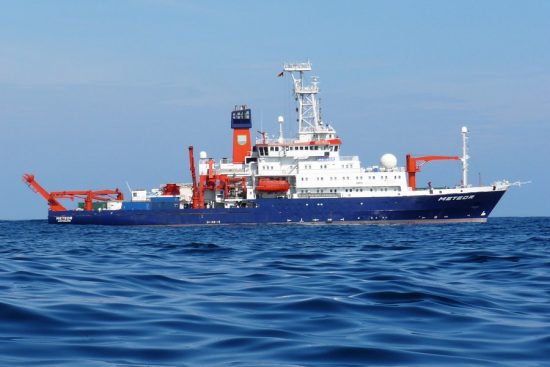


Kiel marine scientists have discovered that the South-East Pacific
region has been emitting more nitrous oxide levels than previously
expected.
Although nitrous oxide emissions do not appear to be anything to be too
overly concerned about, it is certainly no laughing matter – for
nitrous oxide is one of the gases responsible for the greenhouse
effect; and excess emissions would worsen the effects of global warming.
Besides being used by dentists as an anaesthetic gas, nitrous oxide –
or chemically correct nitrous oxide – is also found in nature in large
quantities. Its heat-absorbing properties means that it is a powerful
greenhouse gas in the lower atmosphere, while at the higher levels in
the atmosphere, it contributes indirectly to ozone depletion.
Until recently, the methods used for measuring oceanic nitrous oxide
sources could only yield rough estimates. "A global assessment of
nitrous oxide emissions [...] is difficult because we do not know
exactly where and how much of it is produced in nature," said Damian
Arévalo-Martínez, a marine chemist from GEOMAR Helmholtz Centre for
Ocean Research Kiel.
The latest research – based on the findings of three expeditions using
a new measurement technology – shows that the Southeast Pacific has
been significantly underestimated as a source of nitrous oxide. In
fact, the new data showed the highest ever measured nitrous oxide
concentrations in the surface waters of the ocean.
Together with colleagues from GEOMAR and the
Christian-Albrechts-Universität zu Kiel (CAU), he presented their
findings in the scientific journal Nature Geoscience.
The research was undertaken between November 2012 and March 2013 aboard
the research vessel METEOR, who studied the oxygen minimum zone (OMZ)
off Peru. Professor Dr Hermann Bange, also from GEOMAR and who
co-authored the paper, said, “In that area like on the eastern
boundaries of other tropical oceans, nutrient-rich waters from deeper
water layers are transported to the surface.”
This movement of water brings much plankton growth close to the
surface, which sinks on the water column upon death. Then, when this
biomass decomposes, the microorganisms would consume more oxygen than
what the surrounding waters could supply. As a result, the oxygen level
drops.
Of all the tropical OMZs, the one in the Pacific is the largest. "We
know that oxygen depletion also affects the nitrogen cycle and favours
the production of nitrous oxide,” said Arévalo-Martínez. During the
expeditions, the scientists had the opportunity of periodically
measuring the nitrous oxide concentrations in surface water for the
first time.
"Before, the ship had to stop every few miles. We took seawater
samples, analysed them and had data for one point only. With the new,
continuous measurement method we get a lot more data, which also
enables us to make better extrapolations for the whole area,” explained
Bange.
 Mares
Mares 26th June 2015
26th June 2015